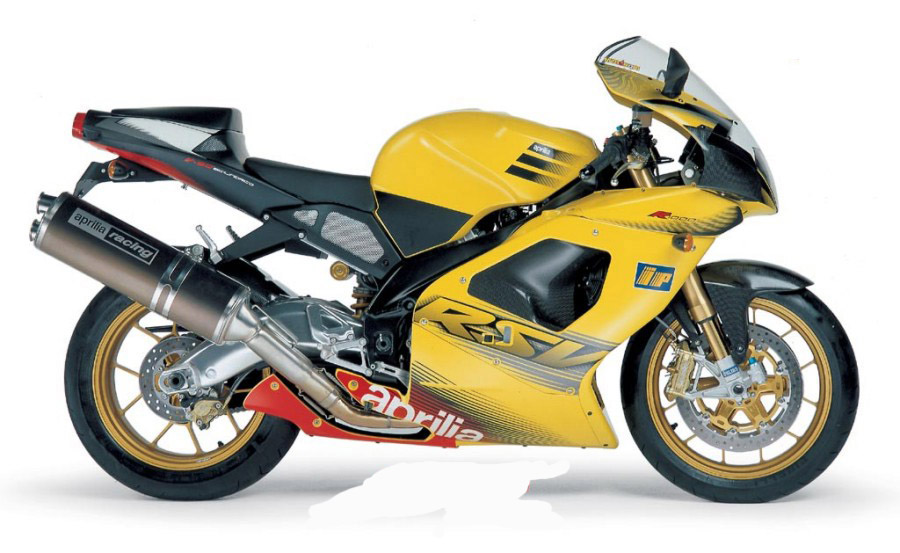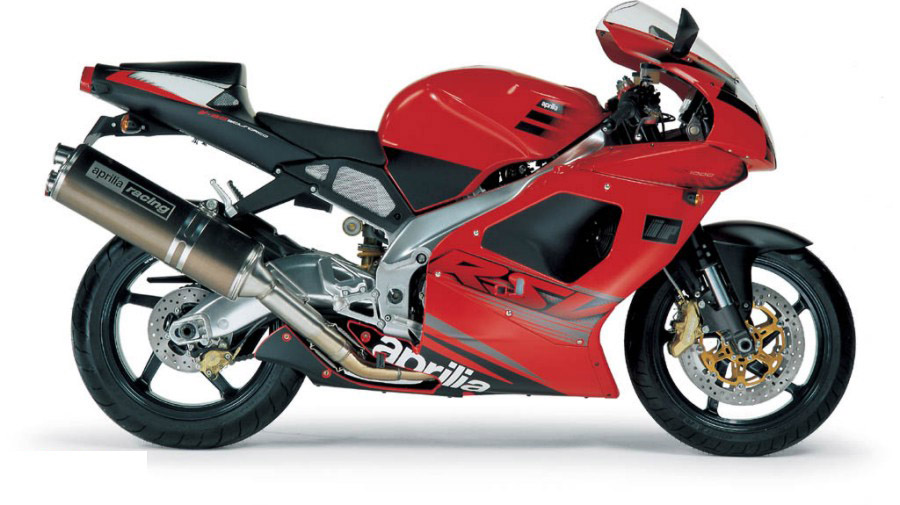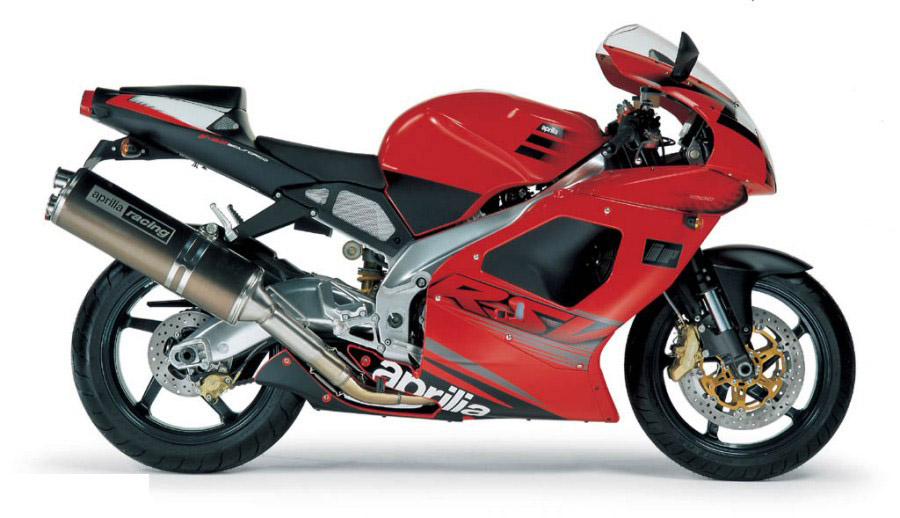|
Make Model |
Aprilia RSV 1000 Mille R |
|
Year |
2003 |
|
Engine |
Four stroke, longitudinal 60░V twin, DOHC, 4 valves per cylinder |
|
Capacity |
997.6 cc / 60.9 cu-in |
| Bore x Stroke | 97 x 67.5 mm |
| Cooling System | Liquid cooled |
| Compression Ratio | 11.8:1 |
| Lubrication | Dry sump |
|
Induction |
Integrated electronic engine management system. Indirect multipoint electronic injection. Throttle body ě57mm. |
|
Ignition |
Digital electronic with one spark plugs per cylinder |
| Spark Plug | NGK, DCP R9E |
| Starting | Electric |
|
Max Power |
101.3 kW /137.7 hp @ 9500 rpm |
|
Max Torque |
107 Nm / 10.91 kg-m / 78.9 lb-ft @ 5500 rpm |
| Clutch | Multiple disk in oil bath with patented PPC Claimed Horsepower: -assisted hydraulic control. |
|
Transmission |
6 Speed |
| Final Drive | Chain, 40/16 (2.5) |
| Primary Drive Ratio | 60:31 (1.935) |
| Gear Ratio | 1st 34:15 (2.27) / 2nd 31:19 (1.63) / 3rd 26:20 (1.3) / 4th 24:22 (1.091) / 5th 24:25 (0.96) / 6th 23:26 (0.88) |
| Frame | Box section sloping twin-spar aluminium alloy frame, two-chamber adjustable Ohlins Racing steering damper with one-piece mounting. |
|
Front Suspension |
Ohlins ě43 mm upside-down fork with adjustable compression rebound and preload |
| Front Wheel Travel | 120 mm / 4.7 in |
|
Rear Suspension |
Aluminium alloy double banana swing arm, APS progressive system linkage. Ohlins hydraulic shock-absorber with adjustable rebound, compression, preload and length |
| Rear Wheel Travel | 133 mm / 5.2 in |
|
Front Brakes |
2 x ě320 mm discs, 4 piston calipers |
|
Rear Brakes |
Single ě220 mm disc, 2 piston caliper |
|
Front Tyre |
120/70 ZR17 |
|
Rear Tyre |
190/50 ZR17 |
| Rake | 25░ |
| Trail | 102 mm / 4.0 in |
| Dimensions |
Length 2035 mm / 80.1 in Width 730 mm / 28.7 in Height 1145 mm / 45.1 in |
| Wheelbase | 1418 mm / 55.8 in |
| Seat Height | 810 mm / 31.9 in |
|
Dry Weight |
185.0 kg / 407.9 lbs |
|
Fuel Capacity |
18 Litres / 4.7 US gal |
| Reserve | 4 L / 1.1 US gal |
|
Standing ╝ Mile |
10.7 sec |
| Acceleration 60-140 km/h | 10.2 sec |
| Top Speed | 278.0 km/h / 172.74 mph |

|
|
|
|


